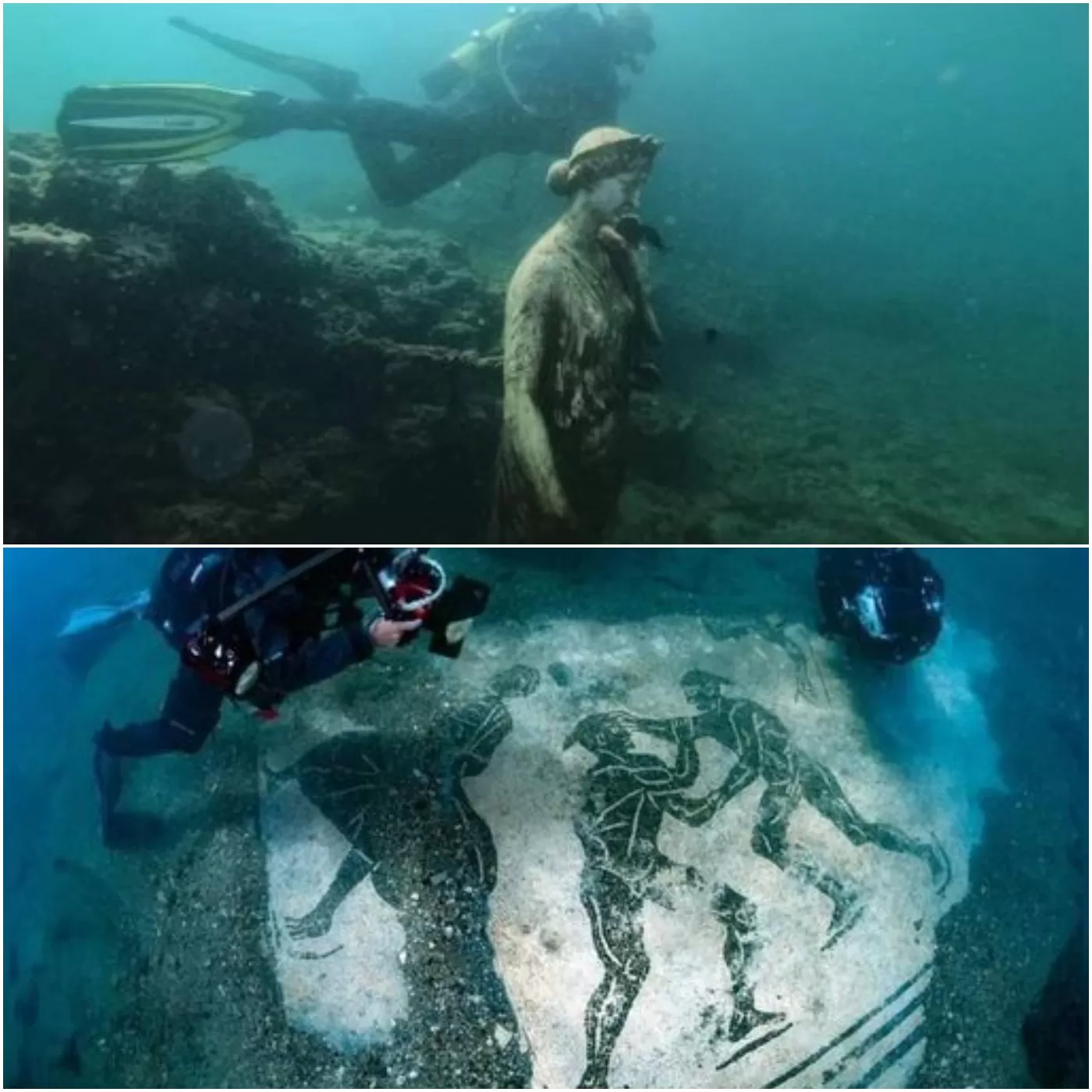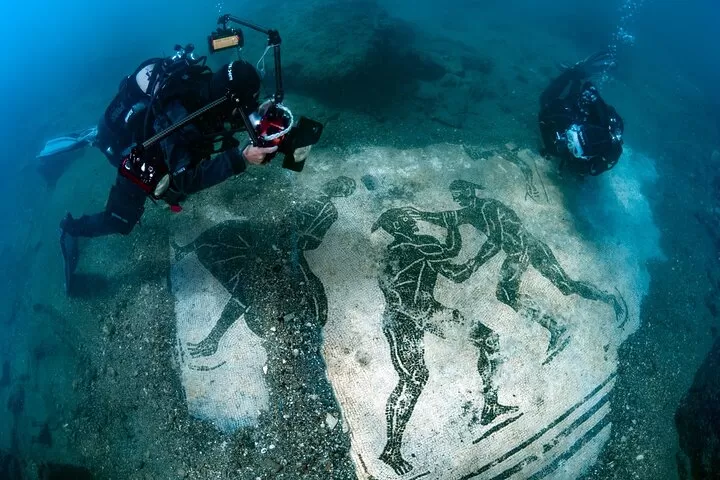The Rise and Fall of Baiae: Explorer Discovers a Lavish Roman Resort Lost Beneath the Sea
Baiae, once a thriving Roman resort, is now a submerged mystery beneath the waves of the Gulf of Naples. Once known for its luxurious villas, thermal baths, and indulgent excesses, this ancient retreat attracted emperors, aristocrats, and the wealthiest members of Roman society. However, the same natural forces that fueled its fame—volcanic activity and hot springs—ultimately led to its dramatic downfall.

Located on the northwest shore of the Gulf of Naples, Baiae was more than just a popular destination; it was the epitome of Roman opulence. During the height of the Roman Empire, it became a favorite getaway for figures such as Emperor Nero, Julius Caesar, and many others in the imperial elite. Baiae was not just a place for rest; it was where power brokers gathered, indulging in lavish feasts, political intrigues, and scandalous pleasures. The town was filled with decadent villas featuring stunning views of the sea, hot springs that offered both health benefits and relaxation, and extravagant entertainment that appealed to the Roman elite’s insatiable desire for luxury.

However, beneath its splendor lay the ever-present threat of nature’s power. The region, part of the Campi Flegrei (Phlegraean Fields), is known for its volcanic activity. The same geothermal forces that created Baiae’s famous hot springs eventually caused the land to sink. This slow subsidence, a phenomenon known as bradyseism, gradually submerged much of the city. Over centuries, entire villas, bathhouses, and other buildings sank beneath the surface, leaving behind only remnants of a once-glorious civilization. Today, Baiae exists as an underwater archaeological site, offering glimpses into the ancient world through the lens of modern explorers.
Recent discoveries have reinvigorated interest in Baiae’s lost grandeur. A team of marine archaeologists and explorers have uncovered submerged ruins that were once the heart of the Roman elite’s indulgence. Through advanced technology, including sonar mapping and underwater excavation, they have unearthed pristine mosaics, intact columns, and even portions of villas that lay hidden beneath the sea for over 1,500 years. The most remarkable find came when an explorer stumbled upon what appeared to be an intact Roman bathhouse, with the floor still adorned with intricate marble tiles. These discoveries provide not only a window into the opulence of ancient Rome but also a cautionary tale of the fragility of human achievements in the face of nature’s unstoppable forces.

Today, Baiae is part of the protected Baiae Archaeological Park, which preserves both the submerged and land-based remnants of the once-vibrant city. While it may no longer be a bustling resort, Baiae continues to captivate historians, archaeologists, and tourists alike, offering an unprecedented glimpse into the luxury and excess of Roman civilization. The tragic demise of Baiae serves as a reminder of how even the greatest empires and their most extravagant creations can be undone by the forces of nature.

The story of Baiae is a powerful testament to the fleeting nature of human achievement. Its rise as a center of power and pleasure, and its eventual submergence beneath the sea, serves as both an awe-inspiring and humbling chapter in the history of Rome. As explorers continue to uncover its secrets, Baiae remains a symbol of the eternal struggle between humanity’s ambitions and the forces of the natural world.





